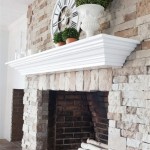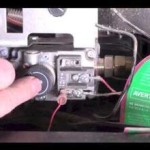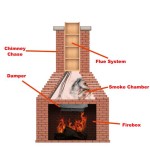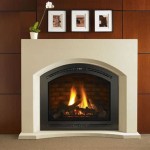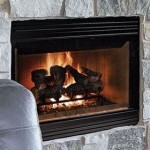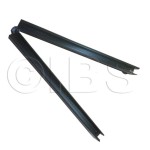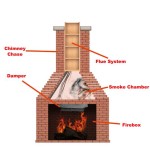DIY Natural Gas Fireplace Insert: Considerations and Alternatives
The allure of a cozy fireplace is undeniable, especially during colder months. Converting an existing wood-burning fireplace to a natural gas fireplace insert offers convenience and efficiency. While professional installation is generally recommended for safety and compliance, some homeowners explore the possibility of a DIY natural gas fireplace insert installation. This article outlines key considerations and explores alternatives for those contemplating such a project.
It is crucial to understand that natural gas involves inherent risks, including gas leaks, explosions, and carbon monoxide poisoning. Working with natural gas lines requires meticulous attention to detail, adherence to strict safety protocols, and a thorough understanding of local building codes. Failure to meet these requirements can have severe consequences, ranging from property damage to serious injury or even death. Therefore, a DIY approach is not advisable for individuals lacking extensive experience and a deep understanding of gas appliance installation.
Safety First: Addressing the Risks of DIY Installation
The primary concern when dealing with natural gas is safety. A DIY installation introduces several potential hazards. Incorrectly connecting gas lines can lead to leaks, which are not always immediately detectable. Even small leaks can accumulate over time, creating an explosion hazard. Carbon monoxide, a colorless and odorless gas produced by incomplete combustion, poses a silent threat. A faulty installation can result in carbon monoxide leaking into the home, leading to poisoning and potentially fatal consequences.
Furthermore, improper venting can compromise the fireplace's functionality and increase the risk of carbon monoxide buildup. Gas fireplace inserts require specific venting systems to ensure proper combustion and the safe expulsion of exhaust gases. Using incorrect venting materials or improper installation techniques can impede airflow and create a hazardous environment.
Local building codes and regulations are in place to ensure the safe installation and operation of gas appliances. These codes specify requirements for gas line sizing, venting, and safety features. A DIY installation may inadvertently violate these codes, resulting in fines, mandatory corrections, and potentially voiding homeowner's insurance coverage. Engaging a licensed and certified gas technician guarantees compliance with all applicable regulations and ensures that the installation meets safety standards.
Understanding the Technical Requirements
Converting a wood-burning fireplace to a natural gas insert involves several technical aspects that require specialized knowledge and skills. These include gas line sizing, venting installation, and electrical connections. Correct gas line sizing is crucial for providing the proper gas pressure to the insert, ensuring efficient combustion and optimal performance. An undersized gas line can starve the appliance, leading to incomplete combustion and the production of carbon monoxide. An oversized gas line can create excessive pressure, potentially damaging the appliance and increasing the risk of leaks.
Selecting the appropriate venting system is another critical step. Natural gas inserts require either direct vent or B-vent systems, depending on the appliance's design and local building codes. Direct vent systems draw combustion air from outside and vent exhaust gases directly outside, while B-vent systems use the existing chimney to vent exhaust gases. Installing the wrong type of venting or using improper materials can compromise the fireplace's safety and efficiency.
Many natural gas inserts require electrical connections for features such as blowers, electronic ignition, and remote controls. These connections must be made safely and according to code to prevent electrical hazards. Improper wiring can lead to short circuits, electrical fires, and potential electrocution.
Exploring Safer Alternatives to DIY Installation
Given the inherent risks and technical complexities involved in installing a natural gas fireplace insert, exploring safer alternatives is highly recommended. The most prudent approach is to hire a licensed and certified gas technician. These professionals possess the necessary training, experience, and equipment to ensure a safe and compliant installation. They are familiar with local building codes and regulations and can properly assess the existing fireplace and gas line to determine the appropriate insert and venting system.
Another alternative is to consider a gas log set instead of a full insert. Gas log sets are designed to be installed within an existing wood-burning fireplace and are generally simpler to install than inserts. While professional installation is still recommended, some homeowners with experience in basic plumbing and gas fitting may be able to install a gas log set themselves, provided they strictly adhere to the manufacturer's instructions and local building codes.
Electric fireplace inserts represent a third alternative that eliminates the need for gas lines altogether. Electric inserts plug into a standard electrical outlet and produce heat using resistance heating elements. They are relatively easy to install and do not require venting, making them a safe and convenient option for homeowners who want the ambiance of a fireplace without the complexities of a gas appliance. While electric inserts do not provide the same level of heat as natural gas inserts, they can still effectively warm a small to medium-sized room.
Ultimately, the decision of whether to pursue a DIY natural gas fireplace insert installation should be based on a careful assessment of one's skills, experience, and risk tolerance. For most homeowners, engaging a qualified professional is the safest and most reliable way to enjoy the benefits of a natural gas fireplace.
How To Install Gas Fireplace Insert Heat Glo

How To Install A Fireplace Insert Diy Save Money

Diy Gas Fireplace Surround Modern Remodel

Existing Fireplace Or A Brand New Build Lopi Fireplaces

How To Install A Gas Fireplace Framing Finishing Tylynn M

Install A Gas Fireplace Framing Finishing Pt 2 Diy Living Room Remodel

Convert To Gas Installing Fireplace Inserts Doctor Flue

Existing Fireplace Or A Brand New Build Lopi Fireplaces

How To Install A Gas Fireplace Framing Finishing Tylynn M

New Free Gas Fireplace Insert Tips A Increases Efficiency By Maximizing The Warmth Output Of Inserts

